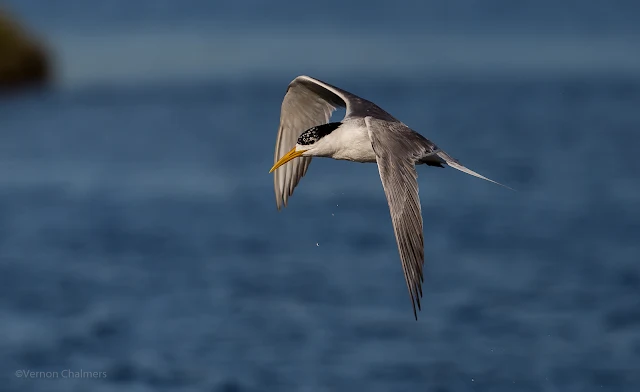Starting out with an Introduction to Canon Birds in Flight Photography
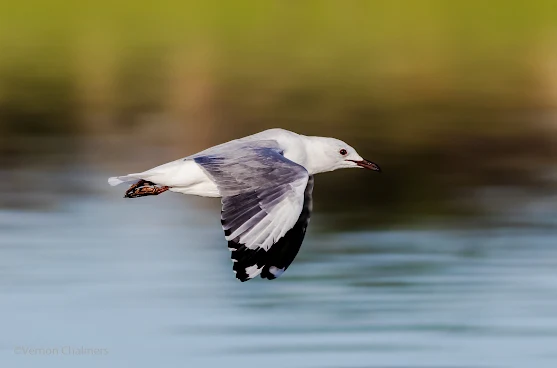 |
| Starting out with Canon Birds in Flight Photography |
Introduction to Canon Birds in Flight Photography
Many photographers, when they first getting interested in Birds in Flight / Action Photography, are of opinion that they require professional grade gear, or at least the latest and / or greatest DSLR / Lens combination that they can afford.
With more than 10 years of personal experience in the capturing of Birds in Flight and the training and development of new photographers in the capturing of Birds in Flight I have seen quite a number of substantial improvements via the photographer's ability without any significant change in body and / or lens combinations.
The more advanced Canon APS-C or Full Frame bodies (paired with i.e. a 300mm or 400mm prime lens) will provide for an excellent basis to start from, but from personal experience I have seen / consulted many new photographers with professional grade equipment coming to my Birds in Flight Photography Private Training / Workshops with the total honesty (and frustration) of not being successful in this exciting action genre.
Also read: Setup and Tips for Birds in Flight Photography
What I tell many Cape Town photographers staring out with Birds in Flight Photography is that they may just have a possible body / lens combination in their bags without spending any money on new gear.
'Gear Acquisition Syndrome'
Birds in Flight Photography gear acquisition (as referred to tongue-in-cheek globally as GAS - 'Gear Acquisition Syndrome') can very quickly spiral out of control for new photographers putting gear first and not considering a more complete range of requirements / skills development for getting started. I generally recommend Birds in Flight photography delegates / beginners not to make any changes to current gear for at least three to six months (to focus on skills development first).
Birds in Flight Photography Learning and Training Opportunities Cape Town
For Birds in Flight Photography training and shooting opportunities please Contact me
Capturing Birds in Flight is a combination of the following requirements:
DSLR Bodies: FPS / AF / Shutter Speed
Any DSLR capable of shooting between 4 and 14 frames per second (fps) in continuous shooting mode are suitable for Birds in Flight. I.e the Canon EOS 600D / 700D's at 5 fps will get the job done. Even entry-level DSLR bodies with a limited 9-Point Autofocus (AF) system is responsive enough for tracking fast flying birds.
Birds in Flight Photography gear acquisition (as referred to tongue-in-cheek globally as GAS - 'Gear Acquisition Syndrome') can very quickly spiral out of control for new photographers putting gear first and not considering a more complete range of requirements / skills development for getting started. I generally recommend Birds in Flight photography delegates / beginners not to make any changes to current gear for at least three to six months (to focus on skills development first).
Birds in Flight Photography Learning and Training Opportunities Cape Town
For Birds in Flight Photography training and shooting opportunities please Contact me
Capturing Birds in Flight is a combination of the following requirements:
DSLR Bodies: FPS / AF / Shutter Speed
Any DSLR capable of shooting between 4 and 14 frames per second (fps) in continuous shooting mode are suitable for Birds in Flight. I.e the Canon EOS 600D / 700D's at 5 fps will get the job done. Even entry-level DSLR bodies with a limited 9-Point Autofocus (AF) system is responsive enough for tracking fast flying birds.
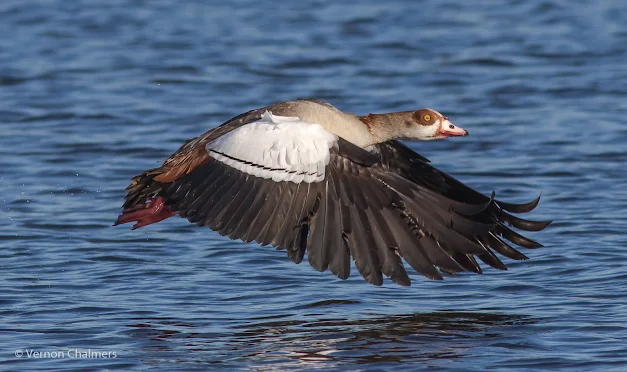 |
| Shutter Speed: 1/3200s - Canon 400mm prime Lens |
Understanding and application of shutter speed is a critical requirement in my view. About all DSLR's will offer shutter speeds of a maximum of 1/4000s up to 1/8000s (in some higher-end bodies) of which all is suitable for freezing the wings of most birds.
I generally use 1/3200s to 1/4000s shutter speeds for the majority of my Birds in Flight photography.
Popular Lenses for Birds in Flight Photography
After training many new Birds in Flight photographers at Woodbridge Island, Cape Town the following Canon, Sigma and Tamron lenses are the most popular for Canon APS-C and Full Frame bodies:
- Canon EF 300mm f/2.8L IS II USM prime lens
- Canon EF 100-400mm f/4.5-5.6L IS II USM lens
- Canon EF 400mm f/5.6L USM prime lens
- Canon EF 300mm f/4L IS USM prime lens
- Canon EF 70-300mm f/4-5.6L IS USM lens
- Canon EF 70-300mm f/4-5.6 IS (II) USM lenses
- Sigma 150-500 / 600mm lenses
- Tamron 150-600mm lenses
 |
| With Canon EF 400mm f/5.6L USM prime Lens |
Lenses: Minimum Focal Length and Apertures
Telephoto zoom kit lenses in the minimum focal length range of +- 250mm are just about suitable as an entry lens choice for starting out at Woodbridge Island, Cape Town - as some areas will allow for very close access to low flying birds.
The 55-250mm or the 70-300mm variable-aperture f/4-5.6 tele-zoom lenses can't really be compared with the optical quality of a prime lens of 300mm or 400mm lens (with apertures of f/4 or f5/6), but under sufficient light you will be surprised of what is achievable - even at f/8 (the 'sweet spot' for image quality / sharpness of many 70-300mm lenses).
Image one: King Gull captured using an entry-level DSLR (EOS 700D) and the kit variable aperture zoom lens (Canon EF-S 55-250mm f/4.5.6 IS II Lens)
Image two: Grey Heron captured using an entry-level Canon DSLR (EOS 700D) and a consumer variable aperture lens (Canon EF 70-300mm f/4-5.6 IS USM lens).
Image three: Reed Cormorant captured using a mid-range enthusiast Canon DSLR (EOS 70D) and the very cost-effective 400mm telephoto lens (Canon EF 400mm f/5.6L USM lens)
Image four: Swift Tern captured using a semi-professional Canon DSLR (EOS 7D Mark II) and the very cost-effective 400mm telephoto lens (Canon EF 400mm f/5.6L USM lens)
Image five: Pied Kingfisher captured using a semi-professional Canon DSLR (EOS 6D) and sharp and fast Canon EF 70-300mm f/4-5.6L IS USM lens)
Image six: Swift Tern captured using a semi-professional Canon DSLR (EOS 6D) and professional-grade prime super-telephoto Canon EF 300mm f/2.8L IS USM lens)
The biggest success criteria of the three images below are not the gear, but the most applicable exposure settings, quality of the light and the fact that I was quite close to the bird with an anticipation / understanding of the subjects's behaviour / flying pattern(s).
Birds in Flight Photography: Skills / Techniques
With learning any new photography genre there is a learning curve. Only many hours in the field will ensure the understanding and mastering of the most suitable camera body / AF / lens settings and the best exposure modes for action photography (ito best results for depth of filed, subject sharpness and overall satisfaction rate of the photographer).
It can take anything from six months or longer for getting a thorough understanding of the camera / lens settings, exposure settings and to learn the different bird birds ito their flying and general behaviour patterns. The objective should not be to master this as quick as possible, but to take time to learn, have fun and spend time with like-minded photographers.
Personal Dedication: Commitment / Motivation
I've seen many of my Birds in Flight Photography delegates increasing their Birds in Flight capturing skills over time well past the original workshop and practical shoots. Some then go on to purchase new and more advanced bodies and lenses, but most just keep on working their skills lens (by shooting as often as they can, asking as many questions as possible and not be afraid to experiment with camera / lens and exposure setting.
Two Cost-Effective Canon Birds in Flight Lens Options - Go Here>>
Capturing / Tracking Variables for Improved Birds in Flight Photography
Capturing / Tracking Variables for Improved Birds in Flight Photography
Birds in Flight Photography Cape Town
Birds in Flight Photography Cape Town
All 9 Birds in Flight images were captured around the Milnerton Lagoon / Woodbridge Island, Cape Town in mostly early morning and sunny conditions.
Telephoto zoom kit lenses in the minimum focal length range of +- 250mm are just about suitable as an entry lens choice for starting out at Woodbridge Island, Cape Town - as some areas will allow for very close access to low flying birds.
The 55-250mm or the 70-300mm variable-aperture f/4-5.6 tele-zoom lenses can't really be compared with the optical quality of a prime lens of 300mm or 400mm lens (with apertures of f/4 or f5/6), but under sufficient light you will be surprised of what is achievable - even at f/8 (the 'sweet spot' for image quality / sharpness of many 70-300mm lenses).
Image one: King Gull captured using an entry-level DSLR (EOS 700D) and the kit variable aperture zoom lens (Canon EF-S 55-250mm f/4.5.6 IS II Lens)
Image two: Grey Heron captured using an entry-level Canon DSLR (EOS 700D) and a consumer variable aperture lens (Canon EF 70-300mm f/4-5.6 IS USM lens).
Image three: Reed Cormorant captured using a mid-range enthusiast Canon DSLR (EOS 70D) and the very cost-effective 400mm telephoto lens (Canon EF 400mm f/5.6L USM lens)
Image four: Swift Tern captured using a semi-professional Canon DSLR (EOS 7D Mark II) and the very cost-effective 400mm telephoto lens (Canon EF 400mm f/5.6L USM lens)
Image five: Pied Kingfisher captured using a semi-professional Canon DSLR (EOS 6D) and sharp and fast Canon EF 70-300mm f/4-5.6L IS USM lens)
Image six: Swift Tern captured using a semi-professional Canon DSLR (EOS 6D) and professional-grade prime super-telephoto Canon EF 300mm f/2.8L IS USM lens)
The biggest success criteria of the three images below are not the gear, but the most applicable exposure settings, quality of the light and the fact that I was quite close to the bird with an anticipation / understanding of the subjects's behaviour / flying pattern(s).
Birds in Flight Photography: Skills / Techniques
With learning any new photography genre there is a learning curve. Only many hours in the field will ensure the understanding and mastering of the most suitable camera body / AF / lens settings and the best exposure modes for action photography (ito best results for depth of filed, subject sharpness and overall satisfaction rate of the photographer).
It can take anything from six months or longer for getting a thorough understanding of the camera / lens settings, exposure settings and to learn the different bird birds ito their flying and general behaviour patterns. The objective should not be to master this as quick as possible, but to take time to learn, have fun and spend time with like-minded photographers.
Personal Dedication: Commitment / Motivation
I've seen many of my Birds in Flight Photography delegates increasing their Birds in Flight capturing skills over time well past the original workshop and practical shoots. Some then go on to purchase new and more advanced bodies and lenses, but most just keep on working their skills lens (by shooting as often as they can, asking as many questions as possible and not be afraid to experiment with camera / lens and exposure setting.
Two Cost-Effective Canon Birds in Flight Lens Options - Go Here>>
Capturing / Tracking Variables for Improved Birds in Flight Photography
Capturing / Tracking Variables for Improved Birds in Flight Photography
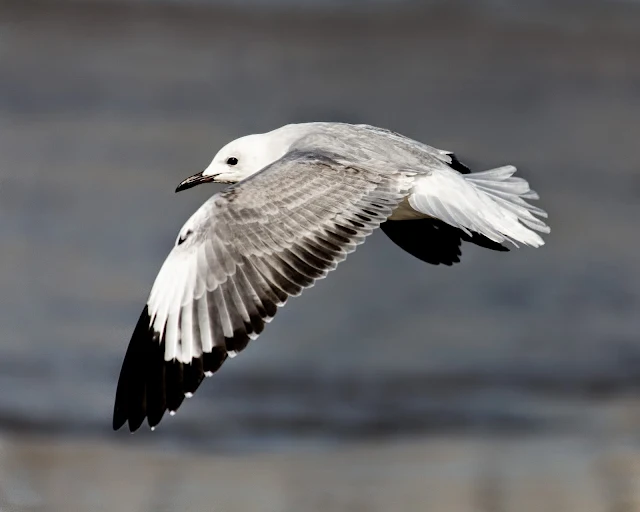 |
| King Gull: Canon EOS 700D / EF-S 55-250mm f/4-5.6 IS II zoom Lens |
 |
| Grey Heron: Canon EOS 700D / EF 70-300mm f/4-5.6 IS USM zoom Lens |
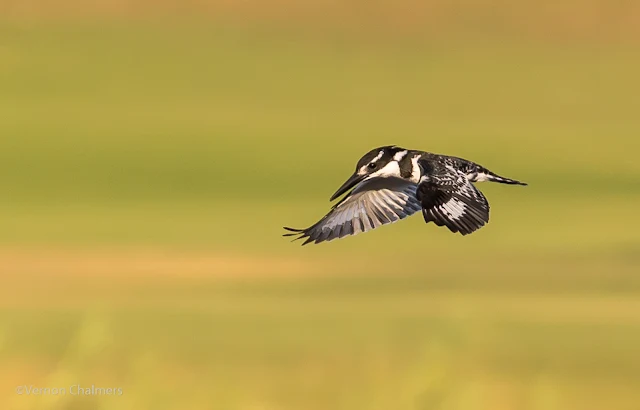 |
| Pied Kingfisher: Canon EOS 6D / EF 70-300mm f/4-5.6L IS USM prime Lens Swift Tern: Canon EOS 6D / EF 300mm f/2.8L IS II USM prime Lens |
Birds in Flight Photography Cape Town
All 9 Birds in Flight images were captured around the Milnerton Lagoon / Woodbridge Island, Cape Town in mostly early morning and sunny conditions.
Canon Photography Training Milnerton Intaka Island | Kirstenbosch | Woodbridge Island Cape Town
